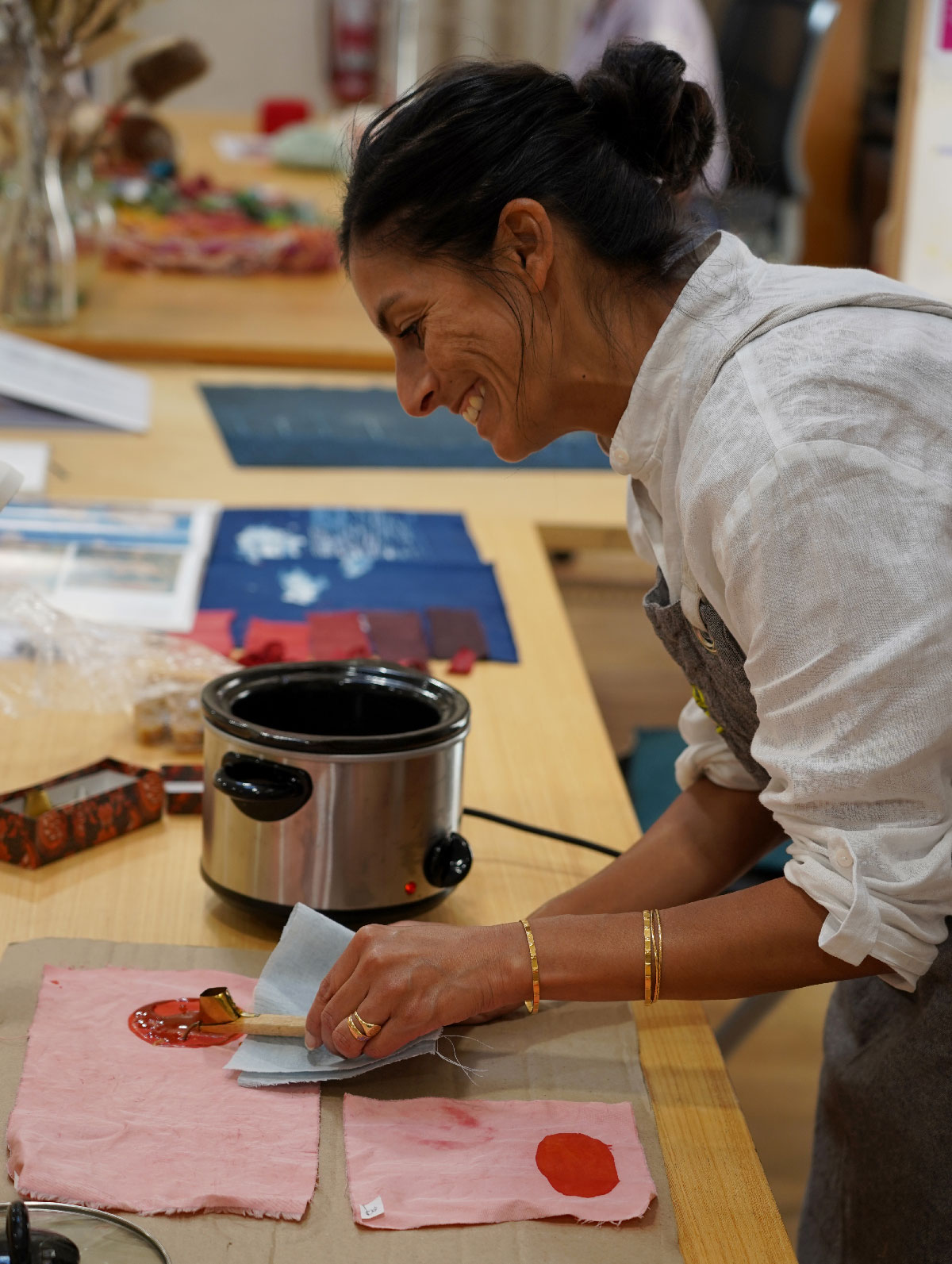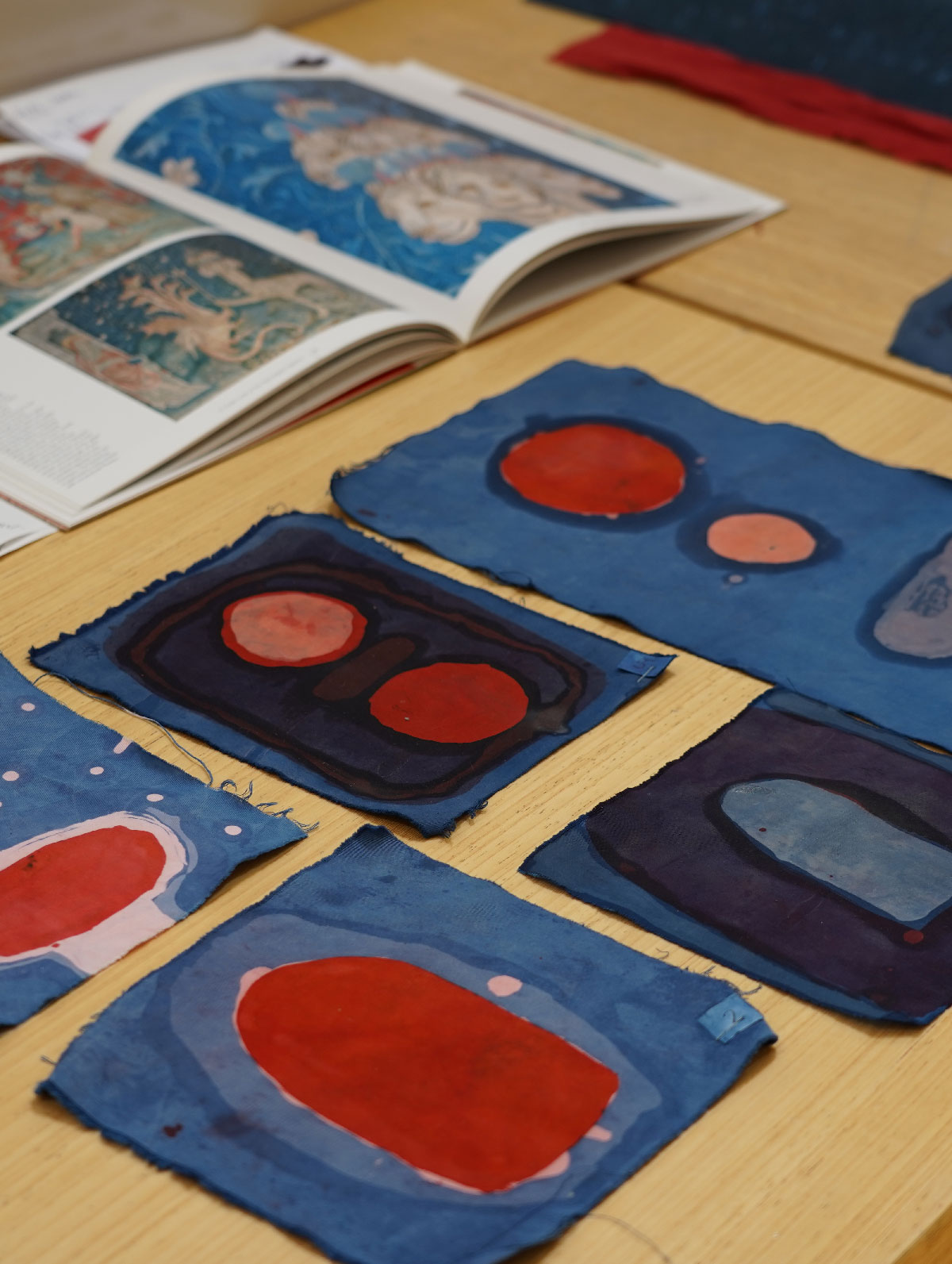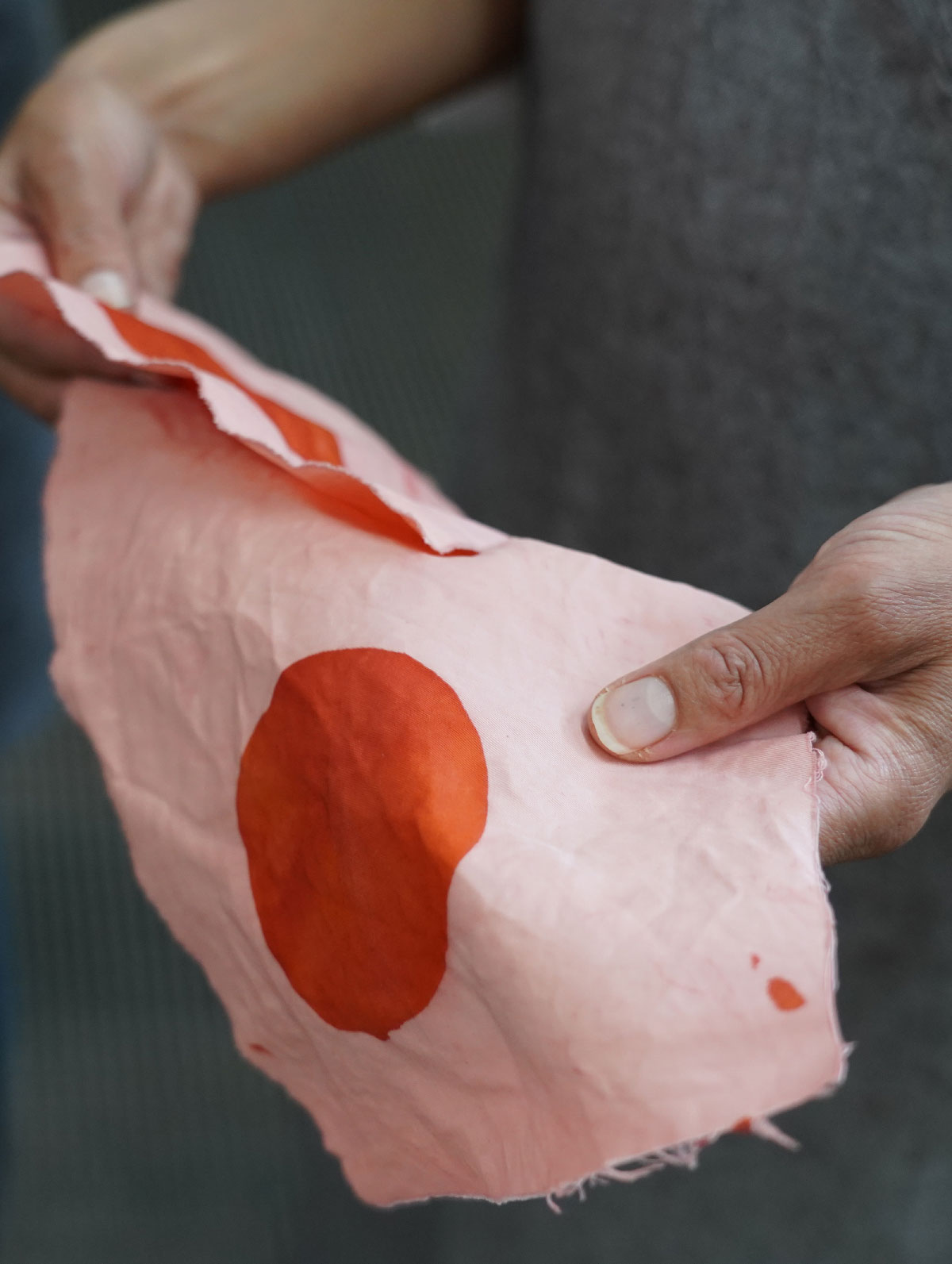


We spoke to current Artist in Residence Sangeeta Sandrasegar about her artistic practice, a typical day in the studio, and her residency goals.
Who or what inspires you to create?
For the last several years the genesis of colour has been driving my urge to create. How colours were first made —from grinding up roots, or boiling certain plants, the ingenious ways that people first began colouring their world. For me, the foundation of these colors—like indigo (which is now synonymous with the jeans we all know) lies in exploring its rich history, It's fascinating to trace how it has crossed continents, created livelihoods, and devastated others, as well as the essential alchemy behind its production. These narratives are then translated both physically and conceptually into the work, to explore themes of migration, homelands, and the cultural, social, and familial connections that emerge from these intersections.
What does a day in the studio look like?
I have a small home studio which I am still unpacking, and I have a 4 year-old. As such, a day in my studio has been much like a hen’s in the yard —scrabbling and scratching into whatever hours I can turn up! In the past my schedule was pretty ordered – I would read and write and respond to emails in the morning over cups of tea and breakfast. Around 11- midday I would begin working until around 5 - 6pm.
What does your practice involve – what techniques do you use in your work?
I work across a range of materials and scales, from intricate cut paper pieces, to large fabric and sculptural works. Projects have manifested as to-scale bronze works, cast from eucalyptus trees in Mysore, India, that traced the botanical currency of British Colonialism across Australia and India to a recent series of 105 hand-cut and dyed paper works exploring Indonesian and Keralan depictions of the Mahabharata, a foundational Indian text. The use of mark making, delicate piercing and paper cutting in the work reflects on the intergenerational importance of creative spaces in which women undertake sewing and needlework tasks. My appreciation of the time and labour that goes into creating natural colours speak to the role of the artist and the particular time that goes into the reading, thinking and practical experimenting to arrive at the finished work.
Last year I completed a large public artwork for the City of Casey that traverses Asian migration into the area and the native flora and fauna. All the various materials and scales I consider draw upon arcs of cultural migration and connects them to the environs and stories embedded within land.
What do you hope to gain from your residency at the ATW, and how does this align with your current practice and future direction?
Since I began working with natural colour I have been working with master dyer Heather Thomas to realise my projects. This collaboration process is similar to how master printers or weavers created and worked with artists in the past, and a friendship and particular artistic language has blossomed between us. Heather now works at the Tapestry Workshop in the dye lab, bringing her expertise with natural dyes as a compliment to the rich spectrum of colours that Tony the dye-chemist has fabricated and developed for all the tapestries over the past 16 years.
Whilst at the workshop I will be working with Heather to expand and refine my technical skills to create more complex coloured works. This involves a vast range of techniques and skills that range from Heathers extensive research to support my artistic aims. We are comparing both wax and mud resists, creating natural ‘dye-paints’, and more detailed mordanting application, with which I will be able to apply colour with greater specificity and accuracy.
The opportunity to be expanding the breadth of my natural dyes application in compliment to observing the synthetic modes of production for which the ATW is renown has already been productive and helped me better understand the processes of colour fabrication. The time to see the parallel application of synthetic and natural colour production at the ATW offers an exciting breadth to my practice concerns that speak to the language of colour, migration, labour and industrial forces. In this interplay the history of specific colours, those deeply immersed in colonial enterprises, are reengaged with their laden complexities today.